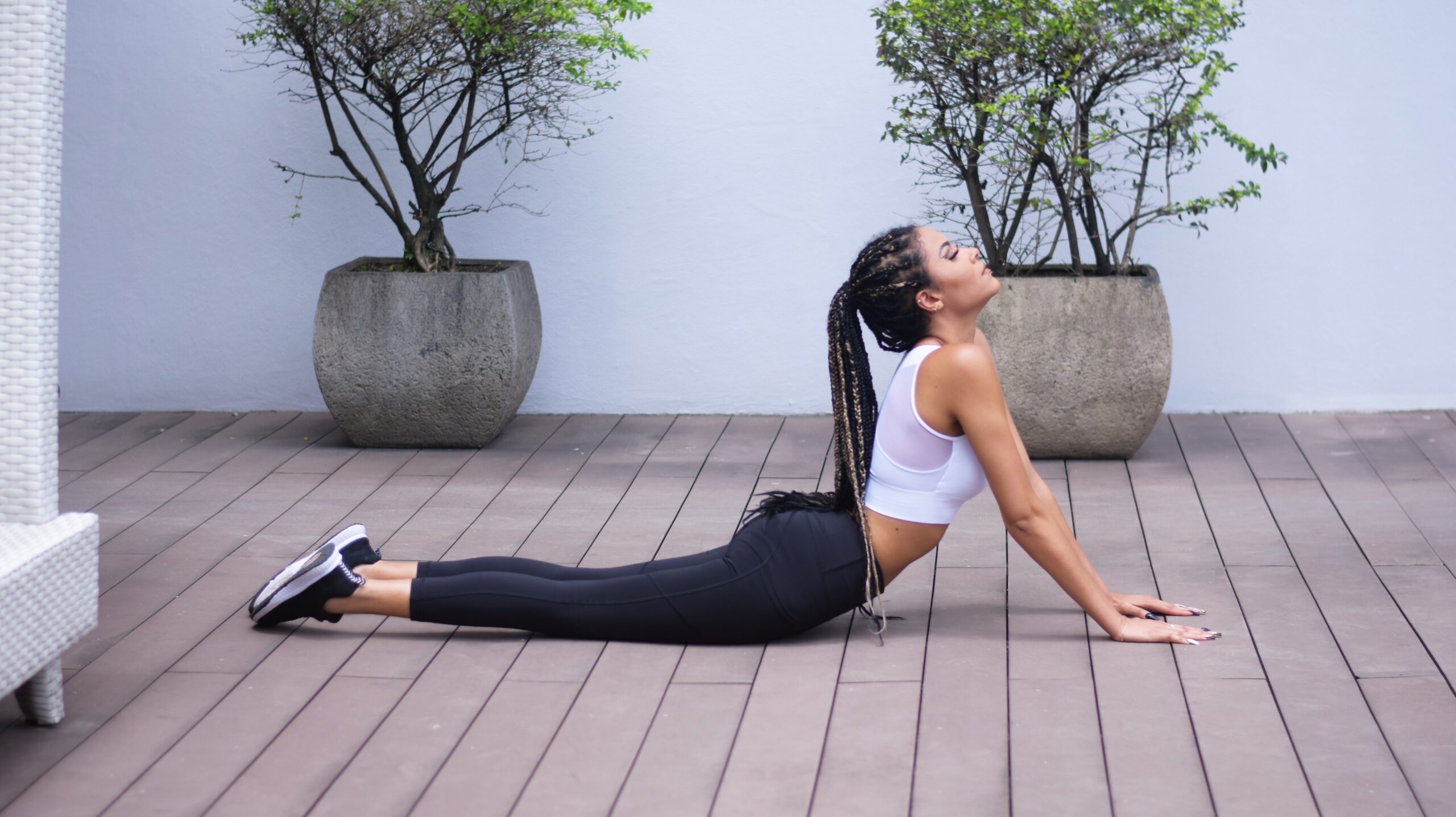Low back discomfort is a typical health issue for older people. There are numerous causes; firstly, the muscles become smaller and less flexible as we get older. Stretching might seem like a little thrilling exercise routine; however, it is vital for your daily activities. It can also help improve your body’s mobility and make everyday routines more enjoyable and easy. In the end, incorporating the back stretches exercises into your exercise routine can give you a boost of energy. It will help improve your flexibility, decrease tightness and, ultimately improve your workouts by making them safer and more effective.
Stretching is neither appealing nor challenging; it will probably not give excitement like running. Yet, by doing a lot of workouts that contract the muscles without moving (stretching) them, they are likely to be in a state of disequilibrium. Consequently, inequities in your body can increase the risk of injuries and result in joints and muscles compensating for others that cannot work correctly. On the other hand, if your muscles are flexible and elastic, they won’t be restricted. Hopefully, this allows you to move them more freely and with a greater variety of movements.

Alleviating back pain and enhancing one’s mobility isn’t so demanding. All that you need are time and goodwill. You can incorporate back stretches movements for flexibility into your routine to ease muscle tension and increase flexibility. Childrensarea.net recommends the following stretching exercises to help ease back pain.
The Ten most Effective Back Stretches:
Quick tips before starting
Back stretches are meant to help relieve the pain. So, try to be extra gentle and careful when you’re suffering from any health issue or injury. It is preferable to consult your physician before starting a new exercise.
You can get back stretches at least once or twice a day. If the pain increases or you feel exhausted, you should rest.
While you do these exercises, be patient and focus on your breathing. Use your breathing as a reference to ensure that you don’t overdo or strain it. It would help if you breathed easily and comfortably throughout every posture or stretch.
1. Child’s Pose

It gently stretches the muscles of your gluteus maximus, thigh muscles, and spinal extensors. Child’s pose can help relieve tension and pain throughout your neck, spine, and shoulders.
It can help relax tight muscles in the lower back, improve flexibility and blood flow along the spine.
To perform Child’s Pose, take these steps:
1. While kneeling with your hands on the floor, you can sink back into your hips until you place them upon your heels.
2. Hold your hips in a tight circle while folding your arms forward and extending your hands to the sides.
3. Place your belly on your legs.
4. Spread your arms out over or along your body while keeping your palms towards the sky.
5. Relax your breathing and focus on relaxing any tense or tight areas.
6. Practice up to 1 minute.
Modifications
If you think you need some additional assistance, try placing a towel on top or beneath your legs.
If you find it more comfortable, increase the width of your knees and rest your forehead on the cushion.
2. Cat Stretch

Cat back stretches occur when your knees and hands mimic a cat’s movement when walking. It typically occurs in the first class in conjunction with its opposite pose known as the Cow Stretch to help prepare your body and get prepared to go full-on. When you’re on the floor, your knees and hands allow you to stretch your back and increase the flexion of your spine. It also assists you in establishing your practice while also opening your upper body and energizing your core.
Follow these steps to do a cat stretch.
1. Take a tabletop position by kneeling at a hip level. Put Your wrists under your shoulders and place your knees directly under your hips.
2. Distribute your weight equally between the four points.
3. Take a deep breath and look ahead. You will notice a minor engagement in your belly.
4. Inhale and gently fold your chin back into your chest and lower your head. Your navel should be dragged towards your spine as you turn your spine to the ceiling.
5. Make sure your fingers are spread out while you push the mat away, and focus on elevating that space over your shoulders. This is a Cat pose.
6. Keep the Cat position for several minutes before returning to the starting tabletop posture.
3. Knee-to-Chest Stretch
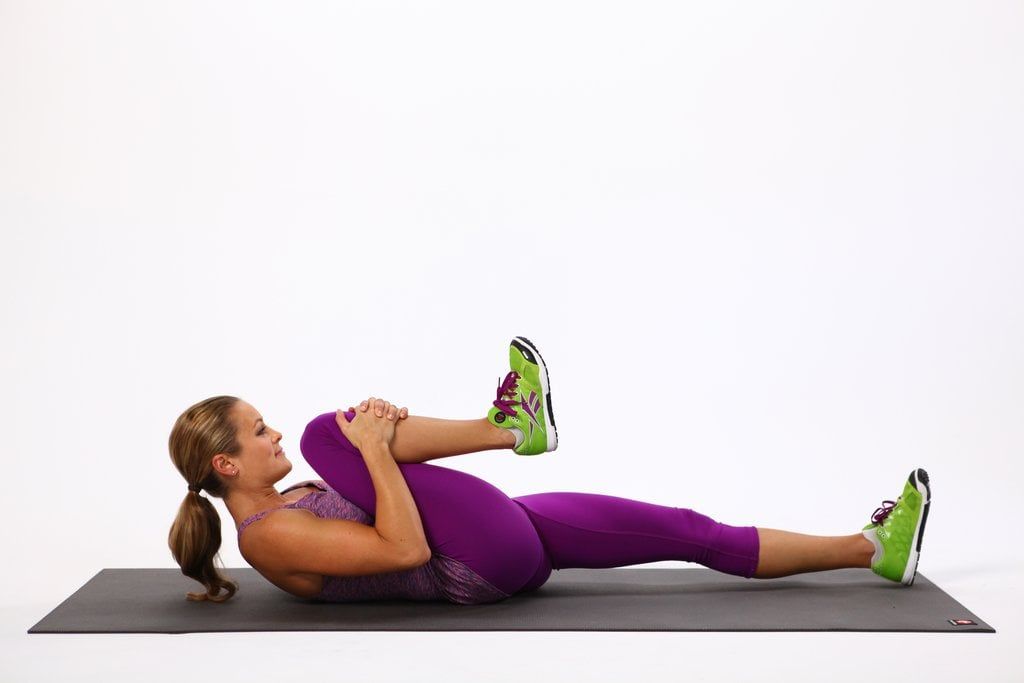
To relax your thighs, hips, and glutes and promote overall relaxation, go for Knee-to-chest stretch.
Follow these steps:
- Put your back on the ground, with your knees bent. Keep your feet lay flat to the ground.
- Maintain your knee in a bent position, or extend it straight across the floor.
- Bring your right knee to your chest, securing the hands of your hips or on the highest point, the shinbone.
- The lengthening of your spine should go until it reaches your tailbone. Avoid lifting your hips.
- Breathe deeply, and release any tension.
- Do this for 30 seconds to 1 minute.
- Repeat with the next leg.
Modifications
Put a cushion on your head to provide additional padding. You could also wrap a towel around your legs when it’s difficult reaching with your arms.
4. Shoulder Stretch

If your back shoulder is stiff, you could be more prone to developing issues with the rotator cuff, particularly in golf. The problem can result from participating in overhead rackets or throwing sports like baseball or tennis. To ensure that your shoulders are flexible:
1. Place your left arm across your body, then hold the right hand at a height below or above the elbow.
2. Keep it for around 30 seconds.
3. Reverse arms, and then do it again.
5. Piriformis Stretch

This stretch will work the piriformis muscles located deep within your buttocks. Stretching this muscle could alleviate tightness and pain in your buttocks, as well as your lower back.
To do piriformis stretches, follow these steps:
1. While well relaxed, lie down on your back with your knees bent and your feet flat down on the flooring.
2. Your right ankle should be at the point of the left leg.
3. Place your hands on your left thigh, and push them towards your chest until you can feel an increase in your flexibility.
4. Maintain that position for 30 secs up to 1 minute.
5. Then repeat the opposite.
Modification
Keep your bottom foot flat to the ground to make stretching more enjoyable. Place upon a pillow to assist yourself.
6. Lower Back Flexibility Exercise
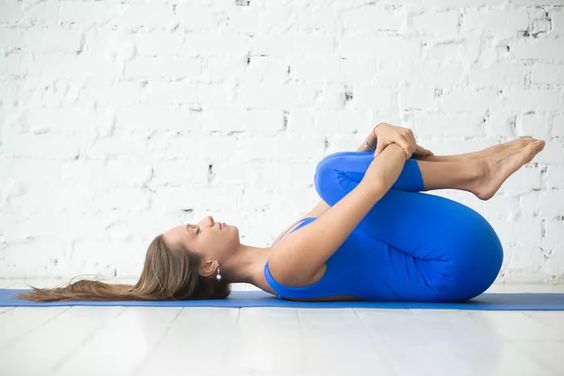
This exercise stresses laying the back on the floor and bending knees. So, place your feet flat on the floor; then begin with five repetitions every day and gradually build up to 30 repetitions.
To perform this stretch, do the following:
1. Lay flat on your back.
2. Keep both knees in front of the chest, and wrap arms around the upper shins.
3. Squeeze gently with your arms to pull your knees closer to your chest.
4. Keep that position for at least 15 minutes before taking it off.
7. Seated Spinal Twist
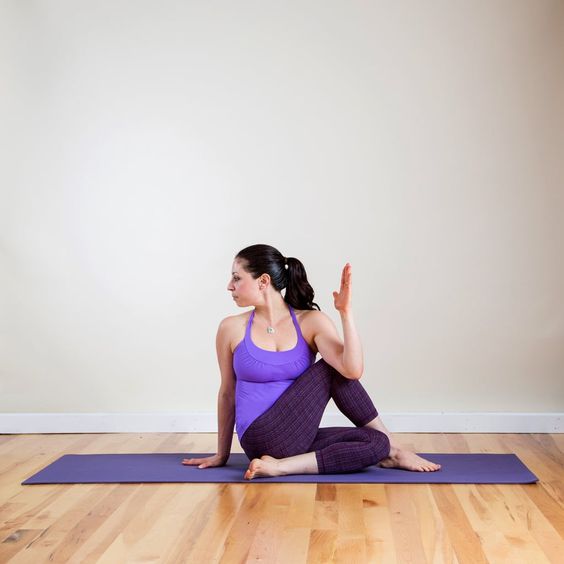
The exercise of back stretches enhances the flexibility in your spine and extends your shoulders, abdominals and neck. The tension from this stretch also stimulates the internal organs.
To perform a seated back twist, follow these steps:
1. Extend your legs towards the front while placing your feet on the floor.
2. Place your feet just outside your right leg by turning your left knee.
3. Put your right arm onto the outside of the left leg.
4. Place your left hand behind your back to provide support.
5. Beginning at the bottom of your spine, turn to the left.
6. You can hold this pose for 1 to 2 minutes. 7. Repeat on the opposite side.
Modification
To make this posture more comfortable, keep both legs straight.
8. Sphinx Stretch

This backbend for back stretches can strengthen your back, buttocks and chest.
To perform, follow these steps:
1. Put your elbows under your shoulders while lying down on your stomach. Keep your hands open in the front position.
2. Place your feet a bit apart. It’s fine. You can allow your toes to meet.
3. Engage with your buttocks, lower back, and thighs while raising your chest and head.
4. Maintain your strength in your abdominals and lower back and breathe deeply.
5. Place your pelvis on the floor.
6. Look straight ahead, or slowly close your eyes.
7. Keep this posture for 30 seconds to one minute.
9. Pelvic Tilt for Back Stretches
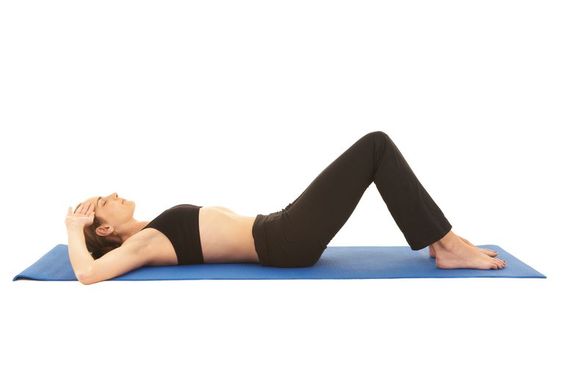
Pelvic tilts can ease tightness and pain within your back. Moreover, they have a positive impact on your glutes and hamstrings.
For performing a pelvic tilt, follow these steps:
1. Relax on your back, have your knees bent and keep your feet lying flat on the floor.
2. Work your abdominal muscles to the max as you flatten your back to the floor.
3. Breathe normally and hold this position for at least 10 seconds.
4. Relax and take several deep breaths to ease your mind and body.
5. Make 1 to 3 sets that range from 3 to five repetitions.
10. Cat-Cow for Back Stretches
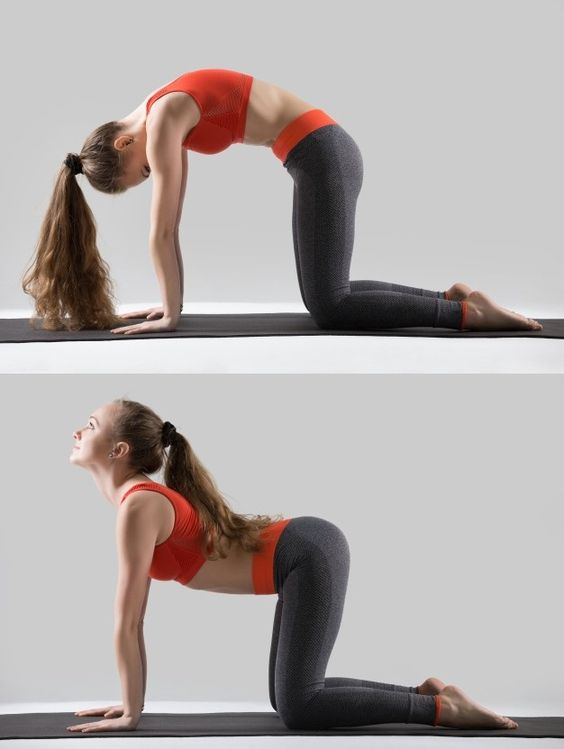
Cat-Cow is an excellent method to awaken your spine and stretch your neck, shoulders and chest.
To do Cat-Cow, Follow these steps:
- Take a step forward on all fours, in a tabletop posture (hands as well as knees to the floor).
- Put your hands on your feet when you exhale to gaze upwards and allow your belly to fill up with air.
- Put your chin into your chest and let the air out while stretching your spine towards the ceiling.
- Keep this motion pattern going and breathe with each breath.
- Do the exercise for 60 to 120 seconds.
Modification
Place your hands slightly inward instead of directly beneath your shoulders. If you’re experiencing knee issues, put cushions under to support them.
For more intense holds, stay in every position for 5-20 seconds instead of moving every breath.
The bottom line
The lower back muscles can perform various activities, from walking and running to jumping. Regular back stretches are good for health. They are an excellent method to build and maintain flexibility, ease tension and build muscles.
5 Benefits of Back Stretches
1. Improves your flexibility.
A regular stretch can improve flexibility which is essential for overall well-being. Flexibility can enable you to carry out daily activities with comfort; it may aid in preventing the loss of mobility that is a sign of ageing.
2. Back stretches expand the range of motion you can perform.
Being in a position to move your joint in its full range of motion allows you more flexibility in movement. The practice of stretching regularly will help you increase your flexibility.
Both dynamic and static stretching could improve the range of motion. However, stretching muscles to the limit might be more effective for quick gains.
3. Increases your performance in sports activities.
Doing dynamic stretching before engaging in physical activities prepares the muscles for the exercise. It also improves your performance during any athletic event or workout.
4. Improves the flow of blood to your muscles.
Doing stretches on a regular regularly could increase blood circulation. Improved circulation can increase blood flow to muscles, which may speed up the time to recover and lessen the amount of muscle soreness. (also called delayed-onset soreness (also known as DOMS).
5. Back stretches refine your posture.
Muscle imbalances are commonplace and can result in poor posture. A study by the Trusted Source discovered that a mix of stretching and strengthening specific muscle groups could ease the pain of musculoskeletal injuries and promote proper alignment.

